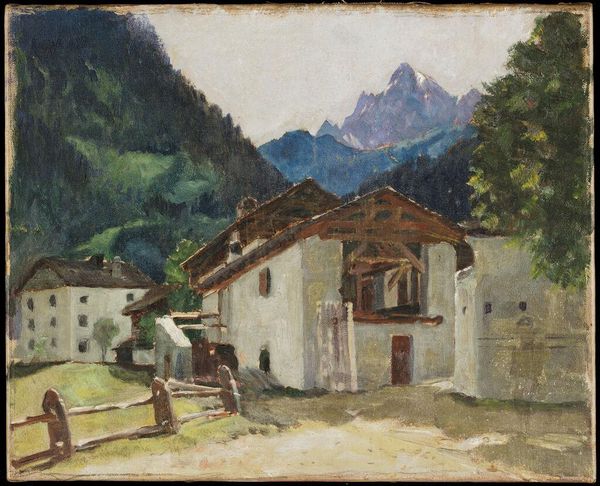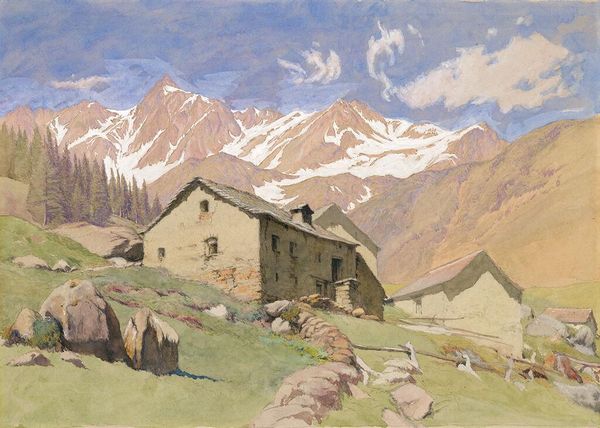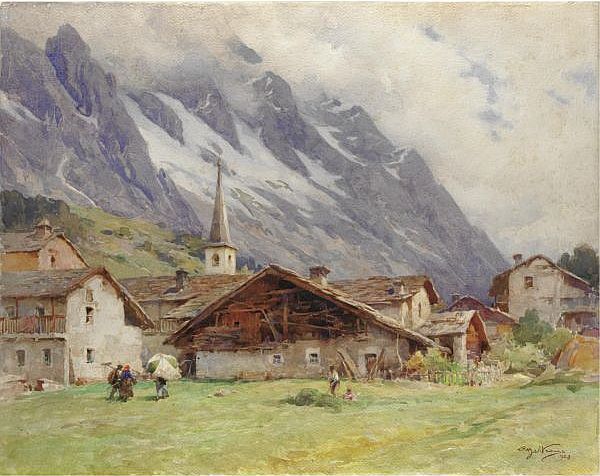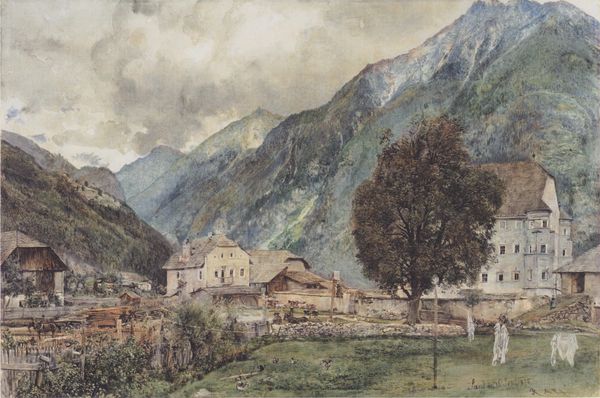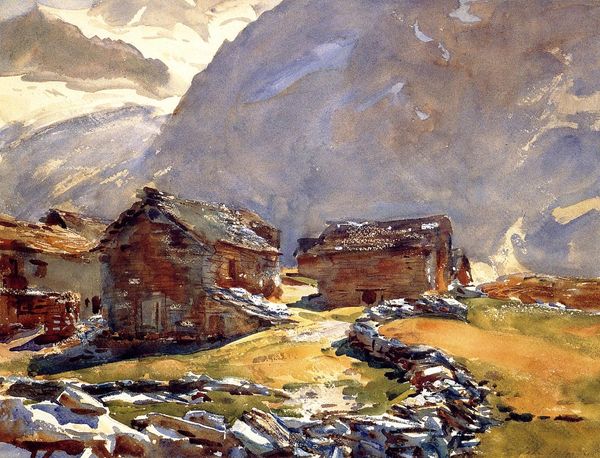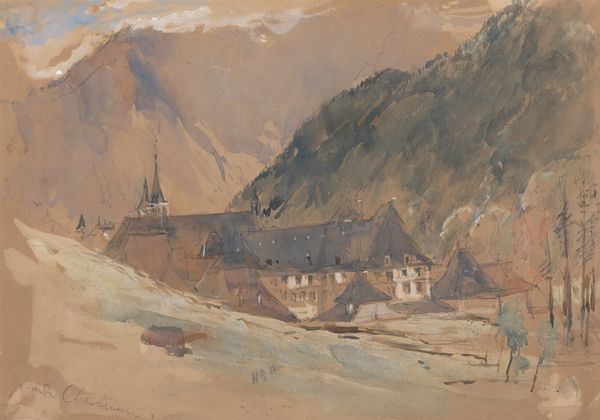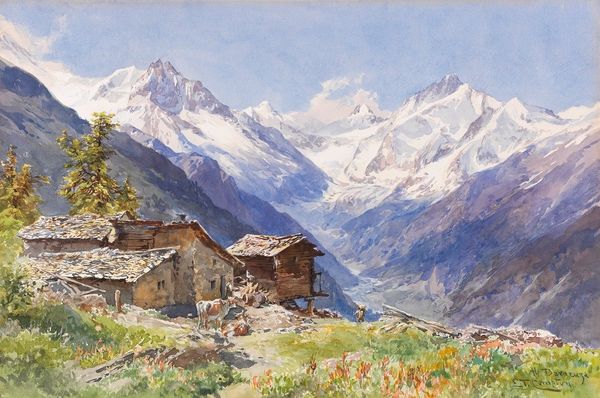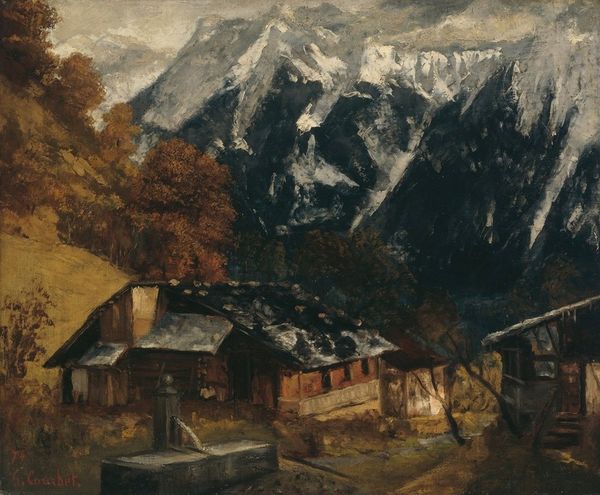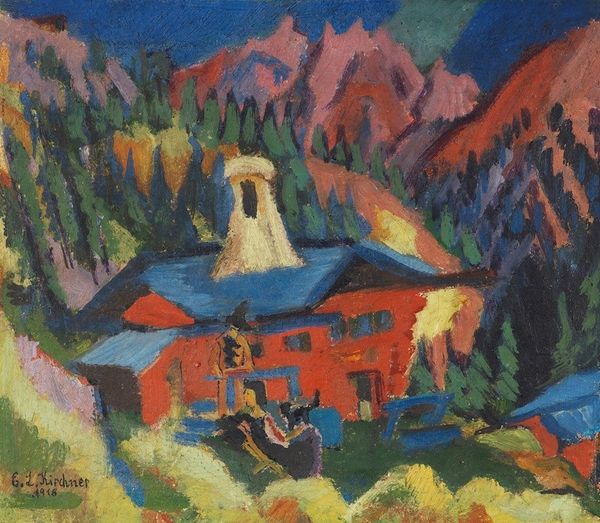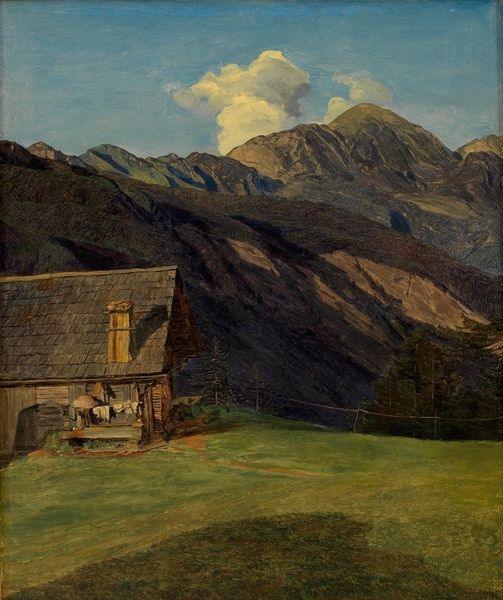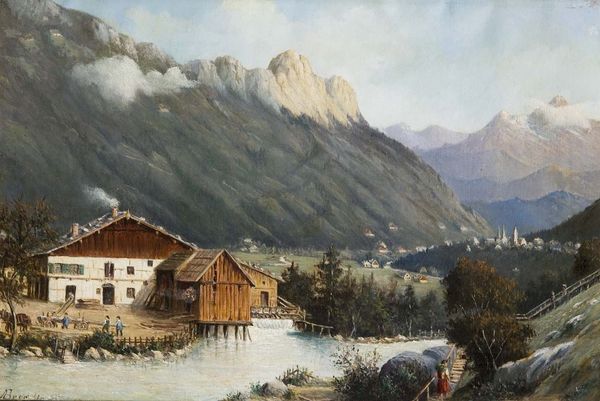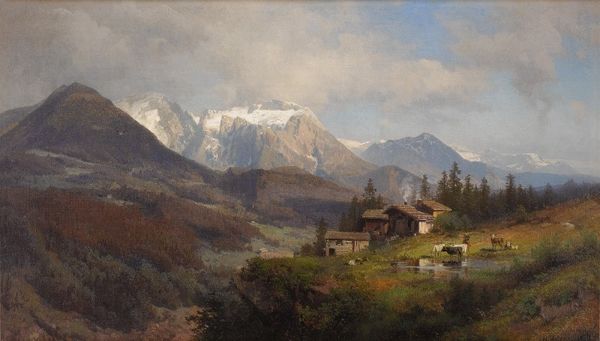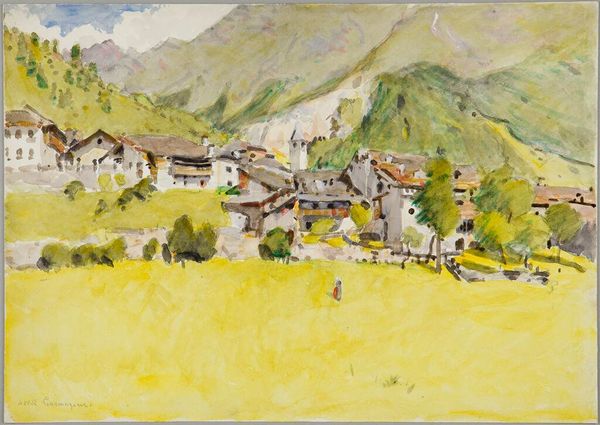
Copyright: Public domain
Curator: Immediately, I’m struck by how the church steeple dominates the scene, almost piercing the sky. The dark, imposing mountain looms behind it, creating a palpable tension. Editor: Indeed. What you’re perceiving is precisely what Clarence Gagnon sought to capture in his 1926 oil painting, "Church of Les Houches, Haute-Savoie, France." It’s a striking example of his landscape work. Curator: The brushwork is incredibly loose, bordering on abstract. Note the way Gagnon suggests form with blocks of colour, especially in the depiction of the houses—it's far removed from precise representation. Editor: That impressionistic style serves a broader purpose. Gagnon, like many artists of his time, was engaging with themes of modernity and the changing relationship between humans and their environment. The rural church, traditionally a symbol of stability, appears almost vulnerable beneath the shadow of the industrializing world represented by the dark, massive mountain. Curator: Interesting. I'm drawn to the chromatic relationship between the stark white of the buildings and the intense, almost unnatural green in the foreground. This contrast really energizes the composition. Editor: Furthermore, consider that Gagnon frequently traveled and painted in Europe, exhibiting widely and contributing to a dialogue about Canadian identity on the global stage. How does his depiction of this French scene inform or challenge notions of nationhood, representation, and artistic influence in the interwar years? Curator: It seems Gagnon is inviting us to appreciate a fleeting moment, not necessarily rooted in the specificity of a place, but expressed through the evocative interplay of colour, form, and, frankly, pure paint. Editor: Exactly, and these landscapes became potent symbols of a cultural memory, mediating Canada’s relationship with Europe and the wider world. A church in a mountainscape gains cultural resonance that far surpasses any technical analysis of colour values, however well done. Curator: I still maintain that understanding the underlying abstract structures within this painting adds to its social understanding as well. Editor: No argument there, a marriage of forms, shall we say?
Comments
No comments
Be the first to comment and join the conversation on the ultimate creative platform.
